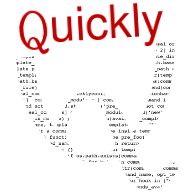Logging Documentary Footage Quickly
Today I’m going to explain a radical new way to log your footage quickly.
Let’s say you have 200 hours of footage and you want to cull your best 30 hours to hand over to an editor. (Disclaimer: this logging system is not recommended if you have funds to hire an editor to watch all your footage.)
First, we’re going to jettison the traditional, time-consuming method of logging footage from A – Z, so let go of your perfectionist mindset.
Second, try to get all your important interviews transcribed. Transcripts help editors cut more quickly.
Third, with transcripts in hand, take the first pass at editing your interviews. Organize only the best sound bites into sequences.
Name some sound bite sequences by topic, for the essay portion of your film. For example, in a documentary about Alzheimer’s, you might call one sequence “Benefits of Early Intervention”. Create sub-clips (or chunks) of 3-6 sentences. Don’t fine cut! Save that for your editor.
Name other interview sequences by plot point, such as “Derek Meets Coach” or “Team Wins Championship”, for any interview comments about story-related aspects of your film.
Ready for the intrepid fourth step?
Examine a list of your remaining verite scenes and B-roll. From memory, identify the best ten percent and watch that footage. In making your selections, ask yourself, “Could I make a good film without this?”
Executing this 4-step logging strategy really depends on your ability to be ruthless and discerning in step four.
For B-roll, include your most beautiful shots.
For verite scenes, select only chunks of key moments, such as the winning play. If your editor determines the scene is good enough to include in the film, she can always search for any ancillary footage needed to cut the scene, such as set up and cutaway shots.
What if your memory fails and you’ve missed something? Accept that this is bound to happen. Remember, we’re letting go of our perfectionism.
The goal is to make a great film with the budget you have. If the footage you cull doesn’t produce a good rough cut, then it’s time to go hunting again through your selects—or shoot more.
Learn more about how to speed up the editing process in our Accelerated Post™ program. I’m still have openings for a few more filmmakers.
